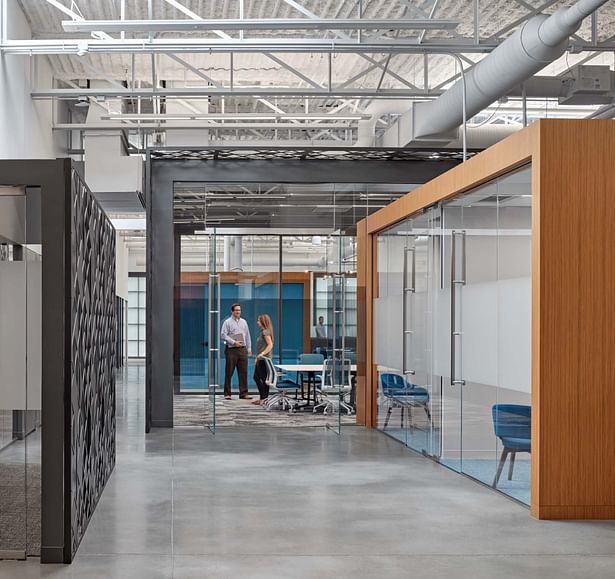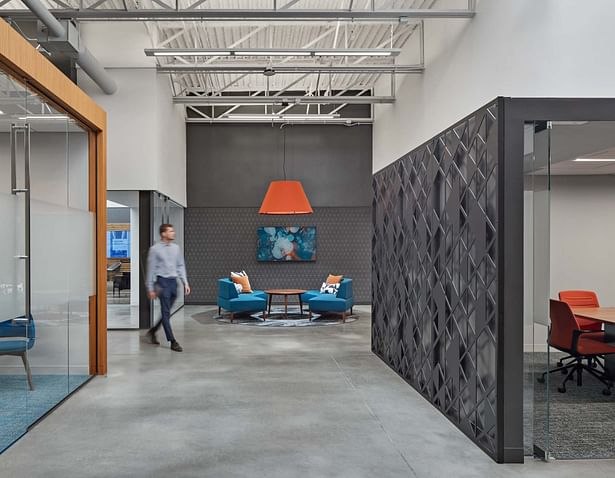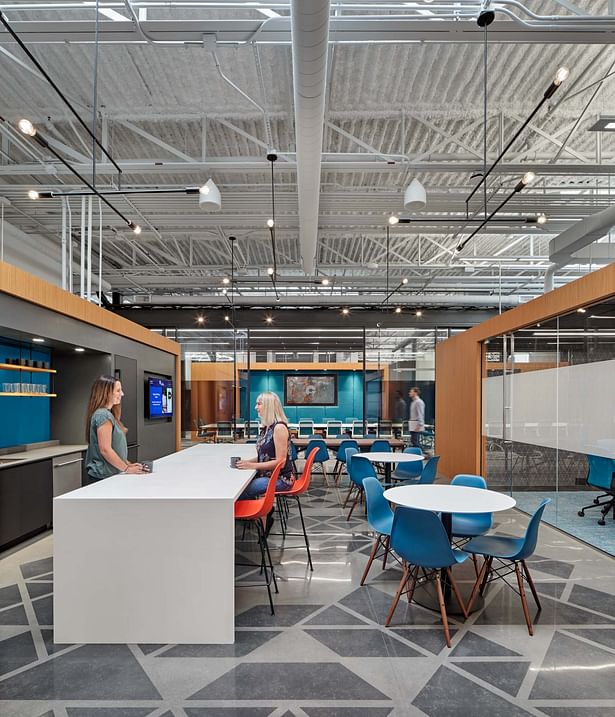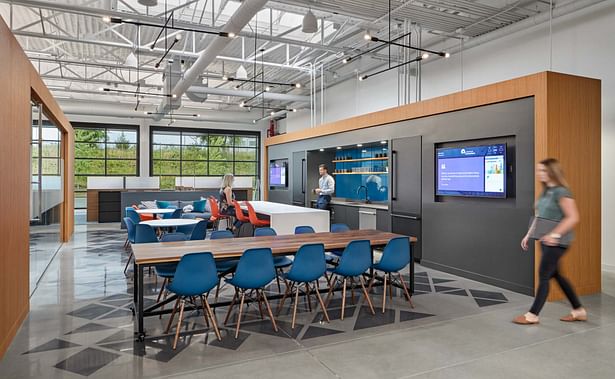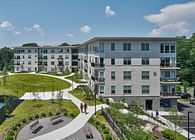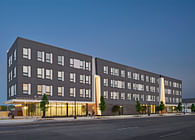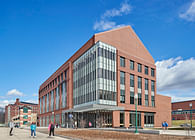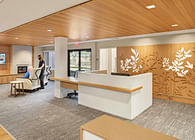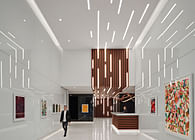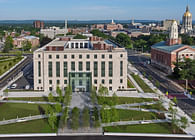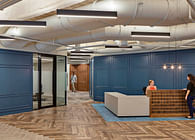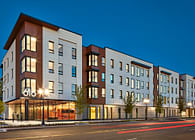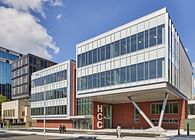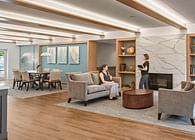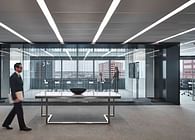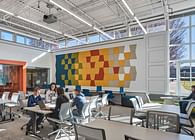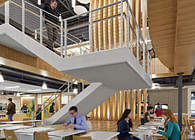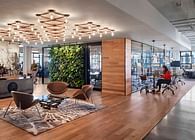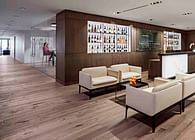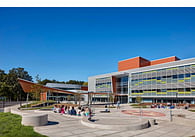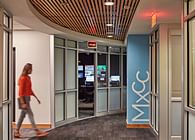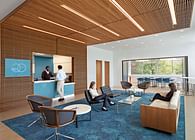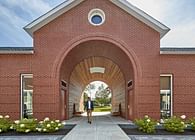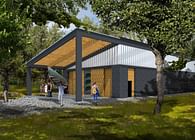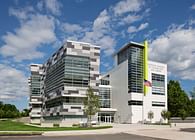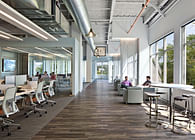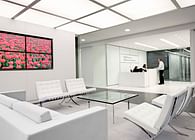
Hartford, CT | Boston, MA | New York
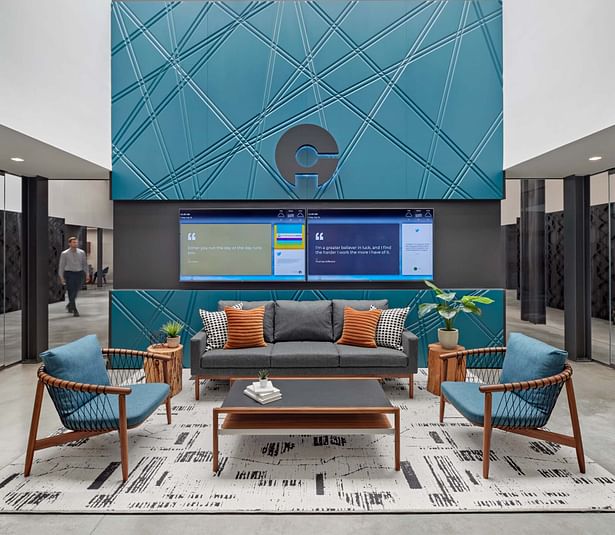
A renovated space in a 1950s bus station will transport a quasi-public venture capital agency into the future.
Connecticut Innovations enables technology start-ups and life sciences companies to launch and grow. Located in New Haven, Conn., their new 9,000-square-foot headquarters designed by Amenta Emma Architects utilizes glass and roofed “boxes” within a larger envelope to create an open, light-filled environment, with spaces for events, small-team collaborations, and distancing.
“The building had a lot of existing features that we were able to maximize,” says lead designer of the project, Amenta Emma Principal Tom Quarticelli. “The high ceilings, skylights, and a long southern-facing glazed wall enabled us to create an interior bathed in natural light.” Exposed structure, HVAC, brickwork, metal panel ornamentation, and concrete floor staining are contextual with original architecture and provide an edgy industrial aesthetic.
At the main entrance, a floor-to-ceiling engraved feature wall houses a screen that allows Connecticut Innovations to showcase its own brand and promote portfolio companies and investor partners. Use of glass throughout the headquarters and along a central corridor, or “main street,” defines program spaces and allows glimpses of activity. A particular highlight is a large conference room adjacent to the café-lounge. The boardroom’s large sliding glass wall opens to unite the spaces to allow for larger meetings or events, such as “Shark Tank”-style pitching sessions.
While the project was designed pre-COVID-19, small offices line the perimeter of the interior, creating a high-ceiling, open environment along with private work spaces. Interior furnishings complement Connecticut Innovations’ brand colors of blue and orange. Countertops and table surfaces are light, bright and easy to clean.
One challenge of repurposing an old bus station included devising ways to incorporate electrical conduits and drains, since the ground slab, which had been encapsulated because of environmental concerns, could not be penetrated. “We had to plan carefully in order to minimize disturbance of the floor slab, while also grouping exposed piping in a visually pleasing manner,” says Quarticelli. “Polishing the existing concrete floor, in addition to utilizing existing exposed structure in the ceiling, contributed to sustainability of the project as well.”
Amenta Emma simultaneously designed an additional office for Connecticut Innovations in the historic Colt Building in Hartford which maintains aesthetic continuity with the organization’s headquarters, while capitalizing on the particular features of the Hartford location such as natural light and exposed brick.
Status: Built
Location: New Haven, CT, US
Firm Role: Architect, Interior Design
Additional Credits: General Contractor: Urbane New Haven, LLC, urbanenewhaven.com
MEP Engineer: RZ Design Associates, rzdesignassociates.com
Acoustical Engineer: Cavanaugh Tocci, cavtocci.com
Structural Engineer: Thornton Tomasetti, thorntontomasetti.com
